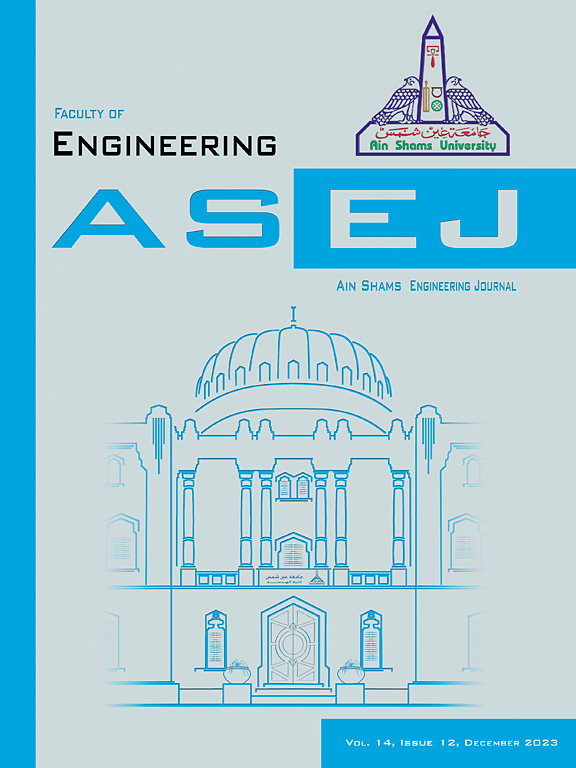基于改进BP神经网络的frp加固混凝土构件中间裂纹诱发脱粘应变研究
IF 6
2区 工程技术
Q1 ENGINEERING, MULTIDISCIPLINARY
引用次数: 0
摘要
纤维增强塑料(FRP)通常用于增强钢筋混凝土梁(RC 梁)的承载能力。然而,由于复杂环境和随机荷载的影响,经常会出现脱粘故障。脱粘失效包括三种类型:板端界面脱粘(PE 脱粘)、临界对角线裂缝诱发脱粘(CDC 脱粘)和中间挠曲裂缝诱发界面脱粘(IC 脱粘)。将混凝土强度、剪跨比例、锚固长度与剪切宽度的比例、受拉配筋比例、钢筋屈服强度、箍筋配筋率、玻璃钢刚度、板材跨度与梁宽的比例作为输入参数。IC 剥离应变被视为输出结果。结果发现,BP 模型可以很好地预测 IC 剥离应变。但是,BP 数据驱动模型容易陷入局部最小值,很难收敛,这对模型的精度有负面影响。为此,提出了麻雀搜索算法(SSA)对其进行更新。结果表明,通过 SSA 优化的神经网络相对误差最小,可以很好地预测集成电路的脱粘应变。此外,对各输入的重要性进行研究后发现,混凝土强度、剪跨比例和钢筋屈服强度对 IC 剥离应变的影响较大。本文章由计算机程序翻译,如有差异,请以英文原文为准。
Study on the intermediate crack-induced debonding strain of FRP-strengthened concrete members using the updated BP neural network
Fiber reinforced plastics (FRP) are often used to enhance the capacity of the reinforced concrete beam (RC beam). However, the debonding failure is often observed due to the effect of the complex environment and the random loads. The debonding failure includes three types: plate end interfacial debonding (PE debonding), critical diagonal crack-induced debonding (CDC debonding), and intermediate flexural crack-induced interfacial debonding (IC debonding). In order to investigate the IC debonding strain of RC beam strength by FRP, this paper proposed some data-driven models to explore the IC debonding strain, based on the machine learning approaches The concrete strength, shear span proportion, the proportion of anchorage length to shear width, tensile reinforcement proportion, steel yield strength, stirrup reinforcement ratio, FRP stiffness, and the proportion of sheet span to beamwidth were regarded as the input parameters. The IC debonding strain was regarded as the output. It was found that the BP model can predict the IC debonding strain well. However, the BP data-driven model is easy to fall into a local minimum, and it is very difficult to converge, which has a negative effect on the accuracy of the model. The Sparrow Search Algorithm (SSA) was proposed to update it. The results indicated that the neural network optimized by SSA with lowest relative error, which can predict the IC debonding strain well. In addition, a study on the importance of each input found that the concrete strength, shear span proportion, and reinforcement yield strength will have a big impact on the IC debonding strain.
求助全文
通过发布文献求助,成功后即可免费获取论文全文。
去求助
来源期刊

Ain Shams Engineering Journal
Engineering-General Engineering
CiteScore
10.80
自引率
13.30%
发文量
441
审稿时长
49 weeks
期刊介绍:
in Shams Engineering Journal is an international journal devoted to publication of peer reviewed original high-quality research papers and review papers in both traditional topics and those of emerging science and technology. Areas of both theoretical and fundamental interest as well as those concerning industrial applications, emerging instrumental techniques and those which have some practical application to an aspect of human endeavor, such as the preservation of the environment, health, waste disposal are welcome. The overall focus is on original and rigorous scientific research results which have generic significance.
Ain Shams Engineering Journal focuses upon aspects of mechanical engineering, electrical engineering, civil engineering, chemical engineering, petroleum engineering, environmental engineering, architectural and urban planning engineering. Papers in which knowledge from other disciplines is integrated with engineering are especially welcome like nanotechnology, material sciences, and computational methods as well as applied basic sciences: engineering mathematics, physics and chemistry.
 求助内容:
求助内容: 应助结果提醒方式:
应助结果提醒方式:


